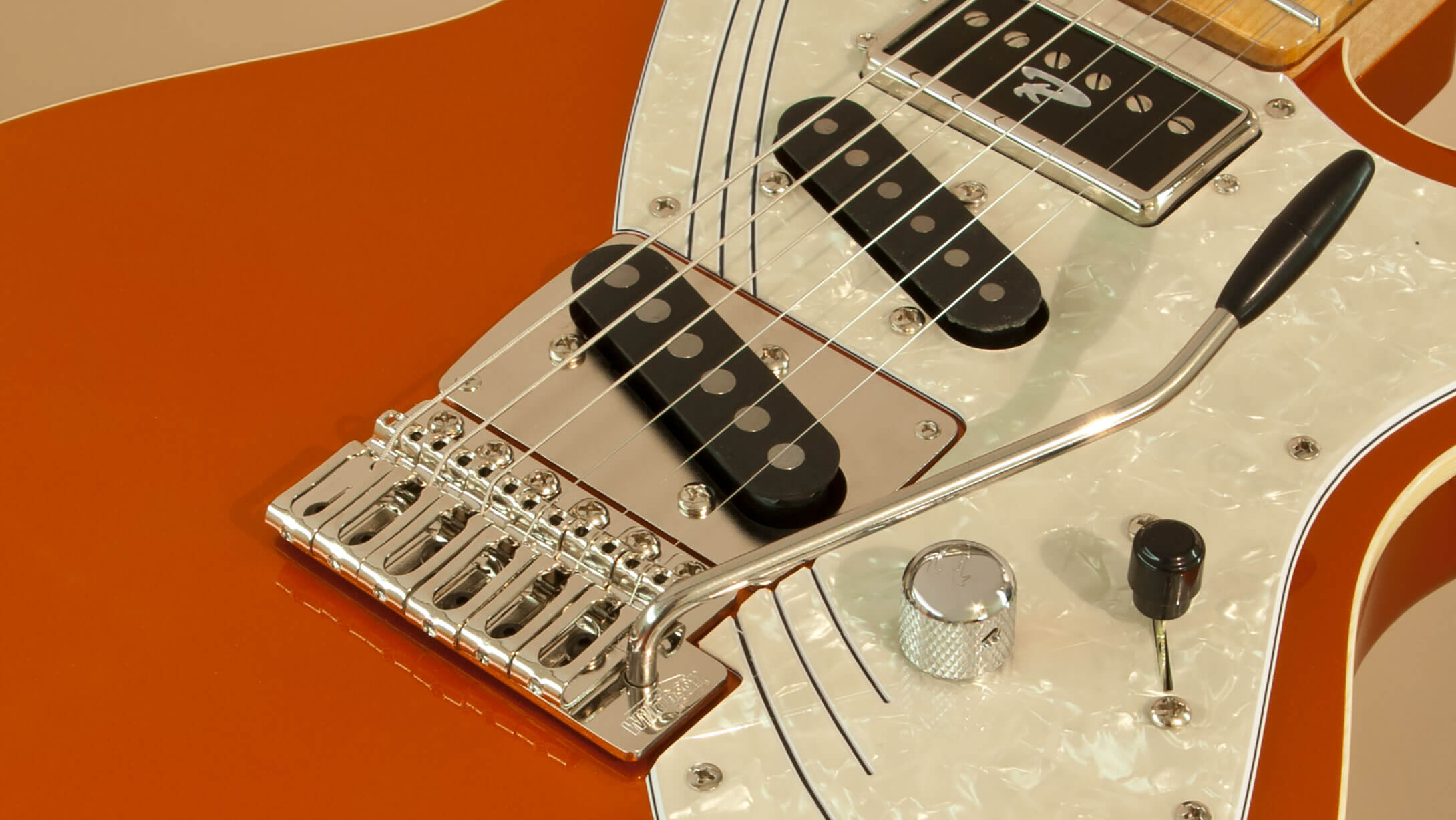Different Types Of Bridges For Guitar
Quick simple rundown for you.ABR's and Nashvilles are both T-O-M bridges. They are called that because of the individual string adjustability for intonation. The ABR's were used on original bursts and I believe on Historic reissues. They are quite narrow and rest on studs that are threaded directly into the wood body of the guitar. The Nashvilles are a similar design except wider to allow greater adjustabilty for intonation and they have a bushing inserted into the body and then a stud threads into that. The bridge then rests on the studs.
Most people prefer the look and sound quality of the ABR but the Nashvilles do usually allow the most adjustabilty.Because the Nashville's are wider though they sometimes don't allow the tailpiece to go as low because the strings will hit the back of the bridge. I'm sure others may add more but that's the general idea. /URLI'd replaced this Nashville that was on a 71' custom with this vintage ABR1 nylon saddles.(very rare and expensive) At first time i could'nt believed the difference in terms of definition and focus. I was skeptical when a guys suggested me this type of bridge.
Apr 23, 2019 - Electric Guitar Bridge Types: Which is Right for You? Find out how to decide which type of electric guitar bridge is right for your playing style. A Tune-o-matic bridge with stop-bar tailpiece. A vintage-style tremolo bridge on a Fender Stratocaster. Floyd Rose Original Bridge. Sep 30, 2014 Electric Guitar Bridge Types: Which is Right for You? The type of bridge installed on your electric guitar has a huge impact on your. Hard-Tail Fixed Bridge. A fixed bridge is the simplest type of bridge to understand. Tune-O-Matic Bridge. A Tune-o-matic bridge. As a guitar top, dense mahogany has a solid, punchy tone with low overtone content and good high-end response. Mahogany back and sides often emphasize bass and treble, with more overtone coloration and a “woody” sound (as opposed to the more metallic sound of, say, rosewood back and sides).
I'd tried cause Nashville wasn't correct period for that guitar. I'd replaced the tail-piece too with an alluminium one.(the brother of the bridge)The result has been unexpected.

Floyd Rose Bridge

So now i'd ordered a couple of vintage replica ABR1 nylon saddles and see what's happen with another LP. I know the Purists will disagree, but I like the Nashville better because it's a little wider, thus, more saddle travel area then an ABR-1, which makes the Nashville more adjustable for intonation.Another thing I like is the way the Nashville is designed. It eliminates the need for the pesky screw keeper wire like on some of the ABR-1's.One thing to keep in mind, especially with the Nashville being a little wider, is you need to make sure the strings don't touch the back of the bridge after they exit the tailpiece. Sometimes you'll need to raise the tailpiece a bit to prevent the strings from touching. First of all - it doesn't let you lower the tailpiece enough because of it's width.a high tailpiece looks funky (in a bad way), creates a blunt breaking angle for the strings which can lead to quirky intonation and a sub par tone and some believe that if you screw the tailpiece all the way down you get maximal sustain and better tone.second - the Nashvilles (at least the current production ones) are made of zinc alloy, not the right material historically.same goes for the current production bridge studs, tailpiece and tailpiece studs.third - well, it's ugly. It sticks like a sore thumbI changed the TOM on my 2011 Trad to Faber steel parts (including the mounting hardware for the bridge and tailpiece) and a Gotoh aluminum tailpiece and it feels like someone pulled a blanket from the guitar's tone. First of all - it doesn't let you lower the tailpiece enough because of it's width.a high tailpiece looks funky (in a bad way), creates a blunt breaking angle for the strings which can lead to quirky intonation and a sub par tone and some believe that if you screw the tailpiece all the way down you get maximal sustain and better tone.second - the Nashvilles (at least the current production ones) are made of zinc alloy, not the right material historically.same goes for the current production bridge studs, tailpiece and tailpiece studs.third - well, it's ugly.
It sticks like a sore thumbI changed the TOM on my 2011 Trad to Faber steel parts (including the mounting hardware for the bridge and tailpiece) and a Gotoh aluminum tailpiece and it feels like someone pulled a blanket from the guitar's tone.